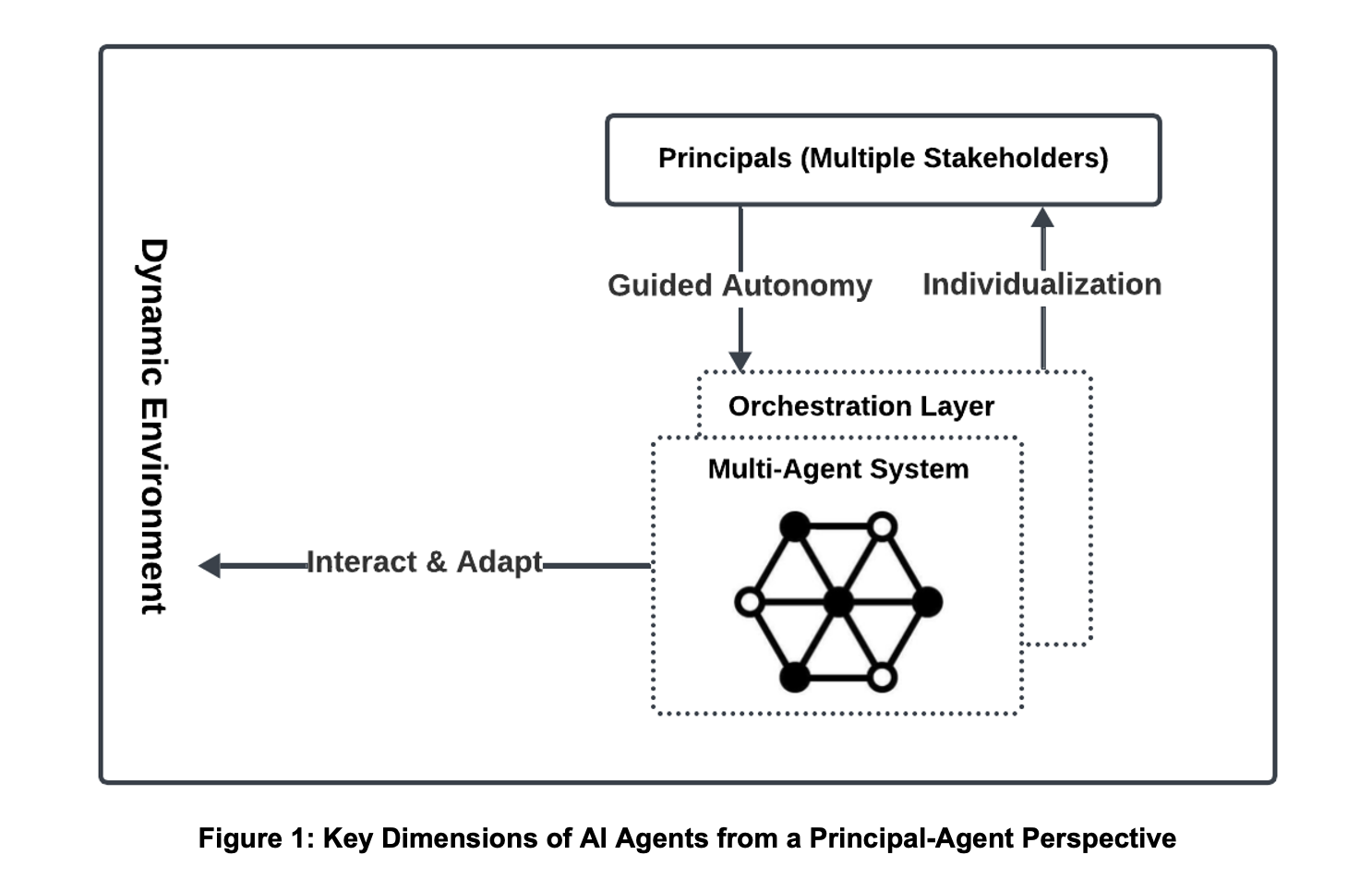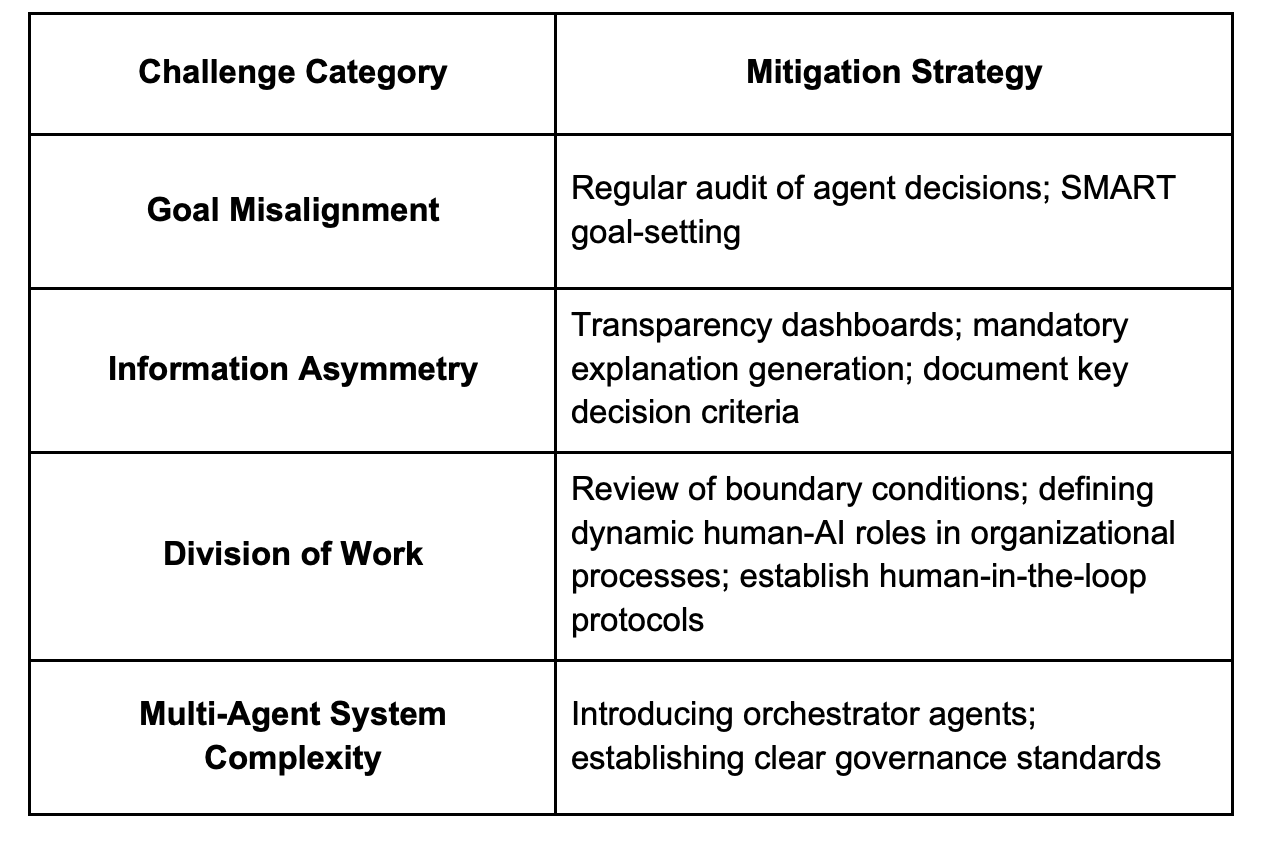California Management Review
California Management Review is a premier professional management journal for practitioners published at UC Berkeley Haas School of Business.
Mohammad Hossein Jarrahi and Paavo Ritala

Image Credit | Sono Creative
The promise of AI agents has captured the business world’s imagination, dominating headlines and strategic discussions across industries. In fact, much of the AI discussion during 2025 will be about AI agents. This begs the question: What is unique about AI agents and how will they transform your company?
Marcus Holgersson, Linus Dahlander, Henry W. Chesbrough, and Marcel Bogers, “Open Innovation in the Age of AI.” California Management Review, 67/1 (2024): 5-20.
Jan Recker, Frederik von Briel, Youngjin Yoo, Varun Nagaraj, and Mickey McManus, “Orchestrating human-machine designer ensembles during product innovation.” California Management Review 65/3 (2023): 27-47.
AI agents not only reason and learn but also interact directly with the environment, making decisions and executing them without direct human input. In other words, they bridge knowledge and action by proactively orchestrating complex workflows.
Today’s AI agents also differ from agents of the past (with their well-structured inputs and outputs), as they can be much more adaptive across a wide range of granular tasks (where fixed paths cannot be hardcoded) based on foundation models. In short, the new AI agents should be able to deal with uncertainty, combine different tasks and workflows, coordinate across different systems and tools, and do all this within changing environments.
A simple example of an AI agent could be a personal AI agent that autonomously books flights, reserves hotels, and coordinates itineraries based on user preferences. More advanced examples of an AI agent in action could be onboarding clients, approving expenses, or customer service agents in retail. Unlike traditional chatbots, AI agents can autonomously interpret customer intent, process refunds, update shipping details, or escalate issues and exceptions to human supervisors—seamlessly combining reasoning, decision-making, and execution. In B2B settings, agentic AI systems can integrate data on industry trends with internal data on key customers’ needs, therefore improving the ability to target and tailor offerings to corporate clients.
Companies like Google, OpenAI, and Anthropic have recently debuted increasingly sophisticated AI agents, showcasing how the next competition ground in foundation models has shifted to the terrain of AI agents. While Silicon Valley CEOs predict AI agents will outnumber humans soon and be used in billions, most organizations are still grappling with fundamental questions about what these agents are and how they should be deployed efficiently and responsibly. As such, the gap between the visionary rhetoric of autonomous AI agents and the practical realities of implementation remains wide. Despite rising interest and investment in AI agents and tech giants increasingly facilitating the infrastructure that enables “open scalable agentic systems”, organizations face difficult questions about their role, functions, and governance. Questions such as “Can they actually be trusted with something serious” will shape the efficiency and effectiveness gains available from agentic systems.
The concept of AI agents is still shrouded in confusion, with definitions varying widely across disciplines and applications. This definitional ambiguity creates challenges, especially in high-stakes organizational settings in which full autonomy is not always desirable or practical. Instead, it is more helpful to view AI agents as systems that integrate reasoning, decision-making, and execution on behalf of users. Specifically, we argue that looking at the role and function of AI agents through the lens of principal-agent relationships offers a more actionable perspective in business and organizational contexts.
The principal-agent framework, as traditionally defined in economic and organizational theory, describes a relationship where the principal delegates tasks to the agent, who acts on the principal’s behalf1. Applying this lens to AI agents emphasizes intelligent agents working for humans and their role as systems designed to fulfill specific objectives while operating within human-defined constraints. From this perspective, AI agents function as intermediaries that balance autonomy with alignment to organizational goals.
In what follows, we discuss key guiding principles for effective AI agent development and integration into business (see Figure 1), which can help organizations prepare for both efficient and responsible adoption while addressing key challenges.

Effective AI agents sense the environment, adapt to dynamic conditions, and proactively address challenges without waiting for explicit instructions. To be adaptive and transcend their training data, the agents must be given the latitude to learn and grow2 in real-world situations. Because of their collaboration with other tools and systems, they can interact dynamically with the outside environment and act as active participants in organizational processes. This ability to integrate contextual cues and respond in real time improves their utility in changing environments. For example, a customer service AI can detect patterns of dissatisfaction in real time and escalate or even address issues before they become widespread. Furthermore, its ability to learn from interactions allows it to improve responses and anticipate common queries. Another example is the use of AI agents in cybersecurity, where the different agents are searching for anomalies in the process and customer data of the organization, and report back whenever potential suspicious activity is detected.
While AI agents of the future are expected to achieve full autonomy, this is not always feasible or desirable in practice. Therefore, to act efficiently and responsibly, AI agents must strike a balance between autonomy and human oversight. Unlike fully autonomous systems, the principle of guided autonomy is about giving agents the leeway to execute decisions within defined boundaries of delegation. This approach provides a clear framework within which the agent operates, reducing risks associated with unrestrained autonomy when AI agents may face unknown unknowns. The boundaries of delegation can grow as agents expand their learning. This guided approach enables humans to continuously express their goals, monitor the agent’s behavior3, and effectively provide feedback. For example, in supply chain management, an AI agent may autonomously reallocate resources to address logistical bottlenecks and know when to escalate significant disruptions to human managers for resolution. In the domain of marketing and communications, AI agents could be developing targeted messaging based on customers’ product use, while enabling human oversight on the process.
There is increasing understanding that AI agents work better when they are specialized, rather than “multitasking” - in this sense, managing a multi-agent system resembles managing a multi-disciplinary team of professionals. When working together as a team or “swarm”, AI agents must interact with other agents, enterprise systems, processes, and stakeholders, while relying on human guidance where necessary, to function effectively within the volatile organizational environment. For example, generative AI systems (capable of generating new content) and analytical AI systems4 (with classification and prediction capabilities) can leverage the strengths of different system architectures to automate workflows. For example, in financial institutions, AI agents managing risk assessments communicate with other agents which handle compliance to ensure that investments adhere to regulatory requirements while maximizing returns. In the domain of market research, there might be a separate “research agent” and “reporting agent”, whose workflows are combined to provide integrated reports to different audiences and domain experts inside the company.
Similarly as in human principal-agent relationships, AI systems require mechanisms to ensure their actions are safe, predictable, and accountable. However, generative AI foundation models often exhibit surprising performances that can be unpredictable, inconsistent, and even erratic. While they may be useful for simple tasks, these behaviors can prove catastrophic for more critical organizational processes, particularly when autonomous execution is concerned. A useful strategy is to combine these models with rule-based control mechanisms and structured reasoning5 to mitigate the erratic behavior of generative AI systems, which may include not only hallucinations6 but even deceptive actions7. As AI pioneer Yoshua Bengio recently noted, “The good news is that if we build non-agentic systems, they can be used to control agentic systems.”
Another important strategy in the orchestration layer is standardization, including shared protocols and data formats, to ensure compatibility and communication between diverse agents and systems. This includes a technical layer that integrates with existing technology stacks and communication with other AI agents but also shared protocols located outside of AI agents8 that guide how agents may interact with institutions like legal systems.
AI agents must tailor their actions to the needs and goals of specific stakeholders - a phenomenon known as the alignment problem. Getting AI alignment right requires an “individualization engine,” where AI agents can cater to the needs and objectives of stakeholders and dynamically adjust their outputs to reflect various individual priorities and organizational goals (e.g., profit maximization versus environmental sustainability). As an example, AI agents in sales can assist sales representatives by learning their preferred negotiation tactics and customer engagement strategies, as well as creating personalized campaigns by analyzing different customers’ data and aligning their recommendations accordingly.
Despite their potential, AI agents introduce unique challenges that mirror many traditional principal-agent problems. To address these systematically, organizations should implement risk mitigation strategies (see Table 1).
Table 1: Challenges in Principal-Agent Dynamics and relevant mitigation strategies

The goals carried out by the AI agent may diverge from the broader strategic objectives of the organization, particularly if incentives or constraints are misaligned. For example, an AI agent optimizing sales might prioritize upselling products, inadvertently damaging customer trust or satisfaction.
The risk mitigation strategy may involve defining the goals of the agents through approaches such as the SMART approach9 (specific, measurable, achievable, relevant, time-bound) and implementing regular audits of agent decisions. For instance, a retail AI agent should have clear upper limits on discount offerings and must maintain a minimum customer satisfaction score while optimizing for sales. Furthermore, if there is no continuous human-in-the-loop strategy, routine or ad-hoc audits of agentic workflows and decisions should be conducted.
AI agents often have access to vast amounts of data and information processing capabilities that their human principals cannot fully interpret or monitor. This can lead to potential misuse or “overinterpretation” of data. For example, a hiring AI might leverage hidden correlations in data to make decisions, potentially perpetuating biases that may go unnoticed or unchecked by the organization.
The risk mitigation strategy could be to deploy transparency dashboards10 that track key decision variables and require the AI to generate plain-language explanations for all critical decisions. For hiring scenarios, this might include mandatory documentation of the specific qualifications and criteria used for each candidate’s evaluation and may involve the application of another agent as an explainability agent.
One of the key challenges in applying agentic AI is defining the dynamic division of labor between humans and AI agents and finding the right places for AI augmentation and automation11. For instance, what types of problems require human input? Are humans only involved in handling exceptions, or do they play a broader role? The confusion about responsibility in automated systems can result in a phenomenon described as a “moral crumple zone12”, where responsibility is diffused and misinterpreted between humans and agents.
The risk mitigation strategy involves carefully articulating the boundary conditions under which decision-making can be reliably delegated to agentic AI systems and the circumstances in which human decision-makers must get involved (i.e., human-in-the-loop). Effective business process management13 can be particularly useful for developing the right combination of human resources and agentic roles, much like teammates in specific organizational processes, yet considering also the inherent differences in human and AI capabilities.
It is gradually becoming clear that AI agents work best when specialized agents are combined into a multi-agent system. However, the complexity of interactions between multiple agents can result in new unpredictabilities, particularly when they reflect competing goals and may use different technical architectures. Too many agents with too many tasks can result in overly complex and difficult-to understand systems. For example, Moderna recently deployed 3,000 ‘tailored GPTs’ to support specific tasks (e.g. dose selection for clinical trials and drafting responses to regulatory questions). While these tools can effectively assist with individual tasks (the trees), they risk losing sight of the broader strategic context (the forest). These challenges require new approaches to multi-agent governance with clear standards for accountability and transparency. Beyond standardizing the multi-agent environment, there is a need for orchestrator agents, which serve as the entity that coordinates the interactions of multiple AI agents, improving overall efficiency and effectiveness. Accenture calls these “strategic agents,” which act as a team leader by coordinating multiple utility agents. As an example, in a logistics network, an orchestrator agent can ensure multiple agents (in charge of handling inventory, routing, etc.) communicate effectively and align their tasks to optimize the whole supply chain.
In addition, as multi-agent systems gradually take on more complex tasks and important responsibilities, an organization-wide AI governance strategy is needed to build guardrails for agents to maintain coherence and safety. For example, at McKinsey, a central team reviews all developed agents based on risk, legal, and data policies before they are rolled out.
AI agents bring us one step closer to the idealist vision of AI as a true partner, not just a tool. However, adopting AI agents requires an AI governance regime that goes beyond the technical capabilities of these systems, integrates them into organizational processes and ensures adaptability, interoperability, and the safety of AI agents as collective swarm systems.
By adopting the principal-agent perspective, companies and their leaders can create more accountable, effective, and responsive AI agents. Ultimately, AI agents become embedded in all the core workflows of organizations and will be augmenting most if not all human work. The principles such as guided autonomy, individualization, and adaptability will help design such organizations.
 Insight
Olaf J. Groth et al.
Insight
Olaf J. Groth et al.
 Insight
Egi Nazeraj
Insight
Egi Nazeraj